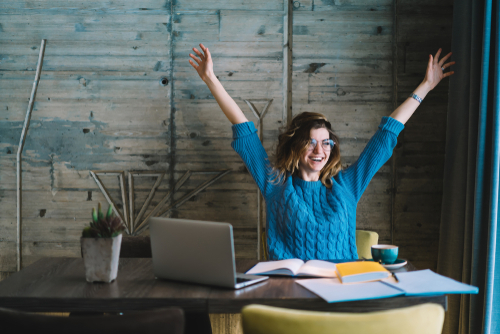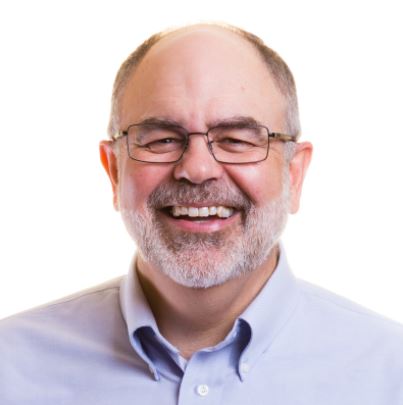Many hands make light work! We’ve all heard the saying before, but have you ever thought about applying that philosophy within your organization? Volunteer program – check – right idea. Now what other areas of your organization can be better supported and strengthened with that philosophy in mind?
Take a look around you. Specifically, take a look around your community. What are other businesses or organizations that are positioned with complementary missions, teams, or resources?
If your organization is seeking a partnership, chances are that your organization is not the only one! Even if it is, partnerships are usually formed to be win-win for everyone involved, meaning that people within your community will likely be happy to discuss your proposition.
Where should I start?
Already have ideas bubbling for a no-brainer partnership? Well good news, that’s exactly where you start! Outline a partnership proposal and get crystal clear on the benefits that both your organization and theirs would receive. Come up with “the pitch” so to speak.
Then, schedule a chat with the person you’d likely be collaborating with in the partner organization. Next steps will likely reveal themselves by the end of that initial call. Rinse and repeat for any other partners you have in mind.
For most, however, first steps might require a bit of reflection and brainstorming. You’ll need to asses where your organization shines and where it need extra support. This will reveal what benefits you could offer in a partnership and what you’ll need extra support with from partners.
To identify your organization’s strengths, weaknesses, opportunities, and threats, pull out the good old SWOT Analysis rubric! If your organization has already conducted a SWOT Analysis, ask for a copy. Otherwise, draft up a quick one yourself. Take your time, but there’s no need to spend more than 30 minutes on this speed draft.
When you’re done, compare your strengths and opportunities to your weaknesses and threats. Your strengths and opportunities will shed light on what you have to offer in a partnership, and your weaknesses and threats will suggest who to seek out in a partnership. Leverage their strengths to support your weaknesses.
Volunteer Programs
Would you consider your volunteer program well established, or does it need some help getting off the ground? If there is another organization that is known for their growing, highly engaged volunteer base, consider reaching out to their volunteer coordinator to explore a volunteer exchange initiative, where volunteers are somehow introduced to the other organization’s volunteer program, fostering more volunteer interest for both organizations. (Check out what Stoneleigh Natural Garden did!)
For example, you might organize a joint event between your organizations. When large gatherings are safe and permitted once again, a collaborative volunteer appreciation event could be a great idea for a handful of partner organizations. Volunteers would feel the love while also becoming more familiar with other volunteer programs (and fellow volunteers!) across the community. (Relevant: “How to Move Your Volunteer Appreciation Week Event Online“)
Most organization’s volunteer programs also come with volunteer coordinators, volunteer program supplies, volunteer management software, and more. Discover which resources could be shared between/among organizations, then bask in the efficiency of many hands making light work.
Services & Programming
Most likely, your organization has some kind of service or programming offered. Once you’ve mentally identified those services, think about other nonprofit and for-profit businesses that offer services complementary to the ones your organization offers. This is where the opportunity lies to collaborate.
Your respective programs could continue running independently, if that works best for all parties. In which case, you’d collaborate with marketing and raising awareness of said programs. This usually becomes what’s known as a “referral program“. Similarly, you can also tout each other’s services as an “expansion” of the services your organization already provides. Both organizations gain a stronger presence in the community as a result.
If there is more in common than not between the respective programs, consider weaving them together in a few small ways that make sense. This will help to reduce spending on resources and scale the impact of the program. Celebrate that saved spending!
Resources

Each organization is equipped with its own incredible resources. In some cases, resources are material goods: vehicles, food, gardens, space, etc. Other times, an organization’s best resource is its personnel: the well-connected founder, the savvy lawyer, or the wizardly grant-writer.
As part of your SWOT analysis, examine these resources. Are there any you could exchange? Are there any you could share? Sometimes an act of true goodwill goes even farther than a proposed partnership. So if your organization’s van is unused on weekends, consider sharing it with another organization that is active on weekends.
Brand Recognition & Credibility
This is less of a tangible tip and more of a rule of thumb. The more your name appears (in a positive light) across the community, the more it will be perceived as established and reputable. Community engagement starts at the front door of your organization, but it certainly doesn’t stop there! 🙂
Recruiting many hands to make light work starts with one hand reaching out in partnership. Get your plans ready, then take action! You’re sure to save money, better utilize resources, and raise organizational awareness across your community.













